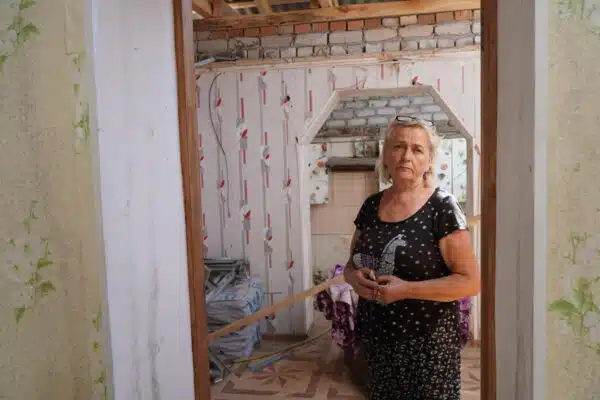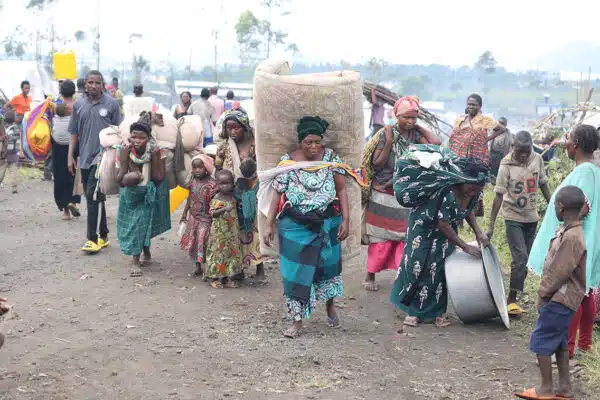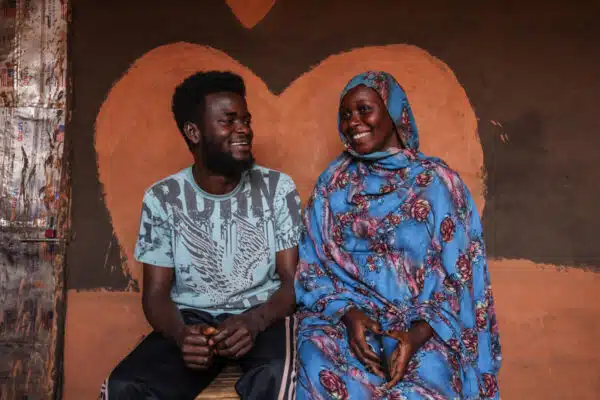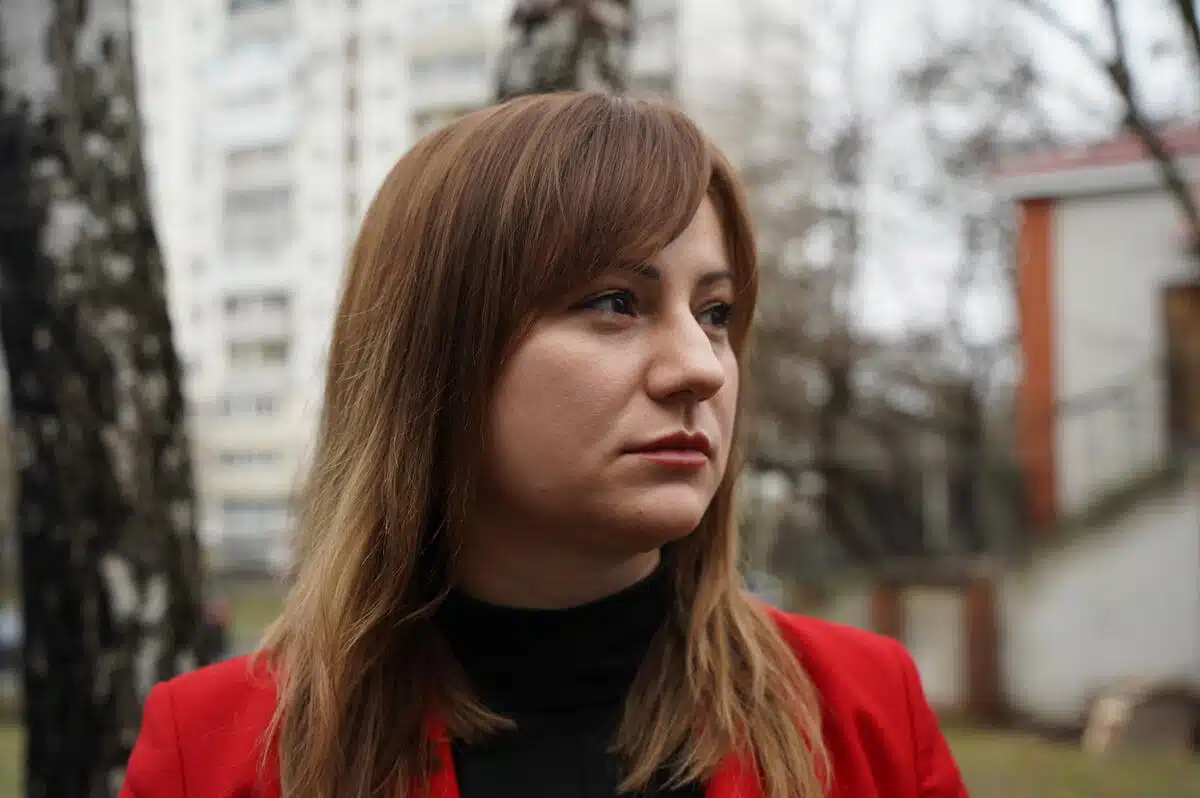
In the last 10 years, Yana Liubymova has emerged as a beacon of resilience for millions of displaced people in Ukraine, advocating for their rights and needs. © UNHCR/Iryna Tymchyshyn
Yana Liubymova uses her experience of displacement to support and advocate for other Ukrainians forced to flee
By Iryna Tymchyshyn in Kyiv, Ukraine
“It feels like you are moving in a tunnel and, at a certain point, can barely control what is happening … You always expect that in a few more steps you will feel some relief, at least psychologically,” said Yana Liubymova, 41, describing her feelings about being displaced from her home twice in 10 years.
Millions of Ukrainians have been uprooted from their homes by the war that started in 2014 in the Autonomous Republic of Crimea and the eastern part of the country, and then escalated into Russia’s full-scale invasion of Ukraine in February 2022.
During the first wave of displacement, about 1.4 million people were forced to flee the hostilities, mainly in Donetsk and Luhansk regions. Yana fled the city of Kadiivka in 2014 and settled in the city of Starobilsk, also in the Luhansk region. Here, her family built a new life. But despite having a successful business, she could not turn a blind eye to the struggles of other displaced people. She co-founded “The Effective Community”, a civil society organization aimed at helping displaced people integrate into their new communities – one of the key priorities for the authorities and for humanitarian agencies.
In 2020, when a Council for Internally Displaced People (IDP Council) was created in the Luhansk region, Yana became its head, serving as a liaison between displaced people and the authorities.
“We started our work because we wanted to help people. I had that experience [of being displaced], and I knew exactly what to do when the war came to everyone in Ukraine,” said Yana.
Lost sense of home
On 24 February 2022, she had to flee for her life again. Hours before Starobilsk came under Russian occupation, Yana and her husband took their dog, packed some documents and left the city that had become their second home. After several days on the road, they had crossed the country and found temporary shelter in western Ukraine’s Ivano-Frankivsk region.
During the first month of the full-scale invasion, over 10 million people – a quarter of Ukraine’s population – were displaced either as refugees abroad or internally in the country.
“After the full-scale invasion, I had a very strong sense of déjà vu, when everyone needed food, a place to sleep, a safe shelter and place to wash,” recalled Yana. “We already saw this in 2014, only this time, it was not about one or two regions. The war reached every corner of Ukraine, leaving no family untouched.”
She helped people who were fleeing to find accommodation and to access the help they needed. After four months, she was offered a job at the Ombudsperson’s Office in Kyiv, the capital, and moved again.
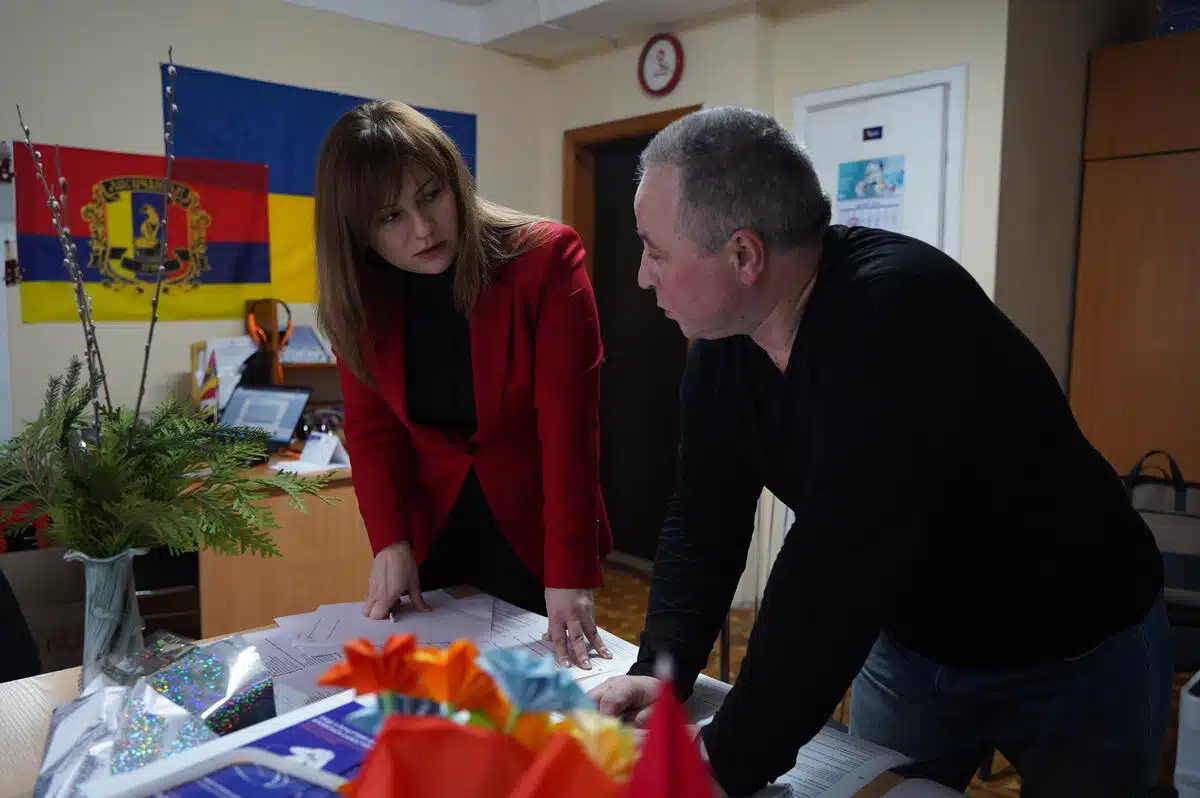
Yana visits a collective site for displaced people in Kyiv, and discusses their needs with Andrii Zhyvaha, who was was displaced from the city Lysychansk. © UNHCR/Iryna Tymchyshyn
Having reset her life twice, Yana holds to her guiding principle: “Do not put life on pause”, even if her concept of home has changed: “My sense of home has been completely erased, and this is traumatizing. For example, in everyday life I do not stand having extra things. I always ask myself whether I really need that cup or other items, and would I be able to take it with me if I need to flee again.”
Amplifying the voices of displaced people
In her role as head of the IDP Council, Yana has maintained her connection with others displaced from the Luhansk region, now almost entirely under Russian occupation. Her focus is not only on those who fled, but also on those who chose to remain in areas that cannot be reached with humanitarian aid.
She emphasizes the importance of creating conditions for people who wish to return voluntarily after the Ukrainian Government regains control over the occupied areas, without imposing policies that force individuals back. Her efforts extend beyond immediate relief, aiming to build a foundation for sustainable recovery and reintegration, for example by advocating for the creation of basic services and employment opportunities in both host communities and areas of return.
There are now 527 IDP Councils in Ukraine, representing displaced communities across the country. In November 2023, the UN Refugee Agency (UNHCR) supported the first All-Ukrainian IDP Council Forum which was held in Kyiv. As the representative for her region, Yana joined a panel that shed light on the plight of millions of displaced people inside Ukraine.
“The person that I was before 2014 no longer exists. They took everything from me,” said Yana, reflecting on the last 10 years that have profoundly changed her life. “Would I do anything differently, if I knew that in 10 years I will lose my home twice? No, I would try to help even more. In those moments when it feels as if I cannot do it anymore, I think of people who are not able to help themselves. I choose to be responsible for them. And I cannot afford to stop.”
“I had that experience of being displaced, and I knew exactly what to do when the war came to everyone in Ukraine.”
Yana Liubymova
Originally published by UNHCR 23 February 2024



